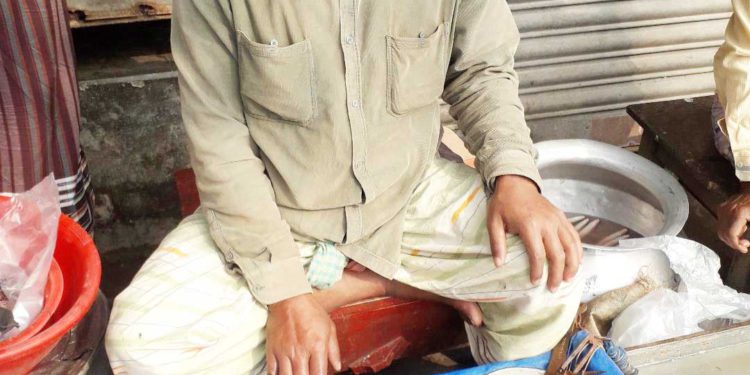Mirza Abdur Rob Bulbul, Chalanbeel:: Chalanbeel is formed by rivers, canals and beels. The largest historical Chalanbeel in Bangladesh is well-known to the people of the country as a fish reservoir and grain reservoir. Asar and Shrabon are the two months of the rainy season.
But this year, a sudden flood in the month of Jaishthya caused extensive damage to thousands of acres of unripe, ripe Iri-Boro rice in this area. Various types of native species of fish came with the water of the premature flood. After a few days, when the flood water receded from the field, a large number of fish of the fish species were caught. During the rainy season, the vast fields of Chalanbeel area are full of water. This year, the flood water is coming a little late.
The wetlands that can be seen in this beel during the monsoon and post-monsoon are what make this beel famous. The real beauty of Chalanbeel cannot be appreciated in the dry season. The Upazilas of the entire Chalanbeel are Tarash, Ullapara, Shahjadpur, Faridpur, Bhangura, Chatmohar, Gurudaspur, Singra and Atrai. This year, the monsoon water has started flowing again. During the monsoon season, more than fifty small and large canals and beels in this region fill up.
With the new water, various types of fish including native species of shoal, bowal, shing, koi, chapila, puti, baila, taki, pabda, chital and others come out of the river. The lower reaches of Chalanbeel are completely flooded with the monsoon water. At the beginning of the monsoon water entering the beel, there is a boom in catching fish and fish with eggs.
Apart from the fishermen of the beel, people of other professions have taken fishing as a separate profession during this time. Some people of this region are transporting goods by boat, some are fishing by boat, and some are ferrying people. On-site information Investigations show that some people are selling different types of fishing nets in the markets of this region, and the craftsmen have prepared boats for fishing.
The roads in the remote areas of the beel are submerged in the water during the monsoon season. During the monsoon season, boats are the only means of transportation for the people of this area. The locals believe that the demand for boats is a little higher this year compared to other years. Many have completed the construction and repair of boats before the onset of the monsoon. A festival of buying and selling fishing nets is going on in every market in the beel area.
Different types of nets for fishing such as current, badai, teuri nets and China duari nets are sold in the markets. In addition, domestically made bhair, britti, tenta, khilshani, konch, jont and polo are sold. Due to the free use of banned China duari nets and current in the Chalanbeel, various species of domestic fish are disappearing day by day. Locals said that during the monsoon season, people in the Chalanbeel area do not have any work, so they earn their living by fishing as an additional profession. Although fishing for fish with eggs is completely prohibited under the Fisheries Act, a group of unscrupulous and amateur fishermen are freely hunting for fish with eggs and fry, disregarding the Fisheries Act. The presence of tourists in Chalanbeel has been observed.
Every morning, groups of tourists from different areas come to visit, and they spend the whole day riding boats and roaming around in the waters of the beel. Tourists cook and eat after tiring themselves all day on the banks of the beel or in boats. People of all ages come to visit here during the monsoon season. During the monsoon season, the entertainment centers and mobile tea stalls of the beel are bustling with activity. The beaches at various points of the beel are now filled with the noise of entertainment-loving people. This shows that the true form of Chalanbeel, one of the largest beels in the country, has changed. During the monsoon season, the fish markets of Chalanbeel are bustling with buyers and sellers walking to sell fish. They said that fishermen and common people in this region earn their living by catching fish and selling it at the fish markets and various markets in the area. The entire Chalanbeel area was once known to the people of the whole country as a fish and grain storehouse.
During the rainy season, fishermen’s nets are full of fish, during the dry season, farmers’ barns are filled with golden rice, and various types of grains including mustard, wheat, and corn adorn the courtyards. During the rainy season, many fishermen earn a living by fishing in Chalanbeel. Fishermen catch fish all night and start selling them at fish markets and markets from dawn.
At one time, Chalanbeel was called a storehouse of local fish and grain. With the passage of time, due to the impact of modernity, the impact of climate change and the construction of houses everywhere by filling up man-made canals and rivers, Chalanbeel has struggled to maintain its ancient traditions, and in the current situation, the fish and grain stores of Chalanbeel are at risk, the locals told this reporter.




















